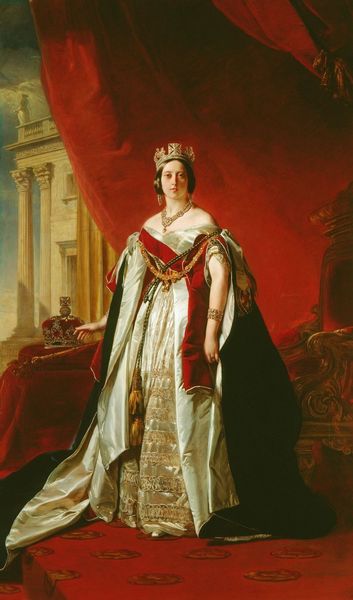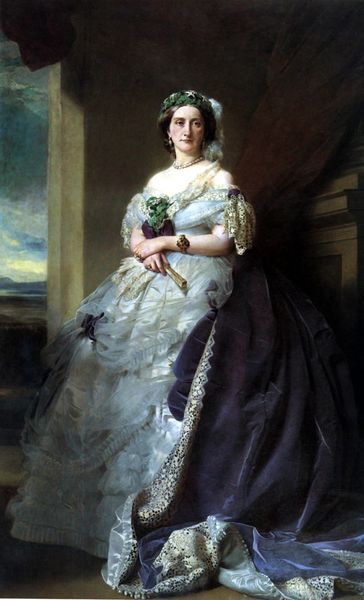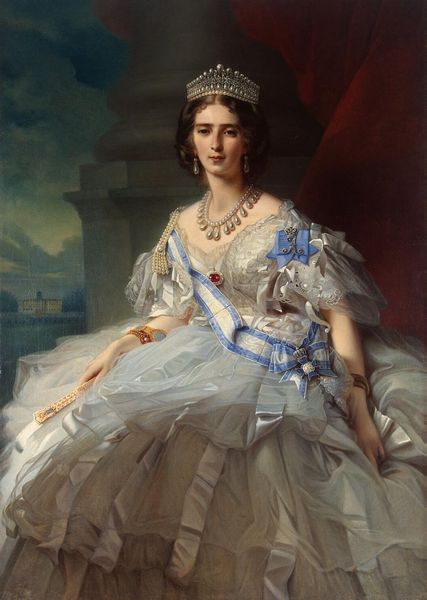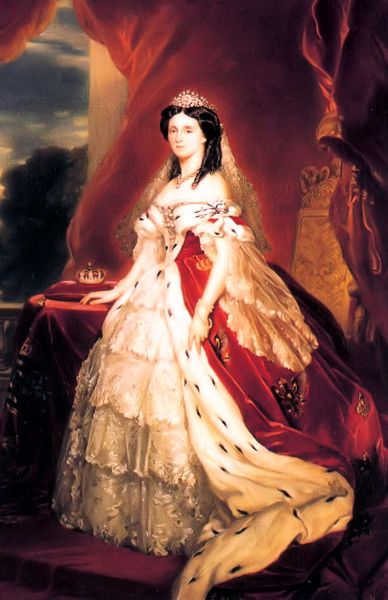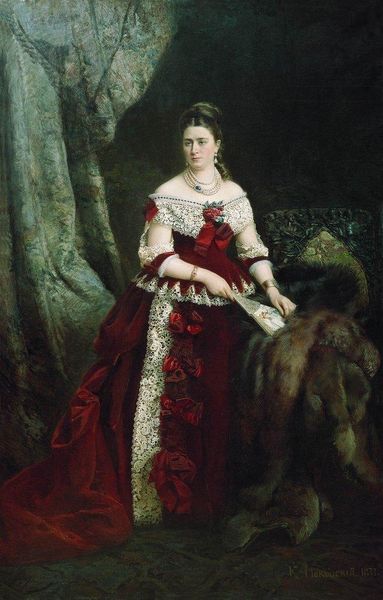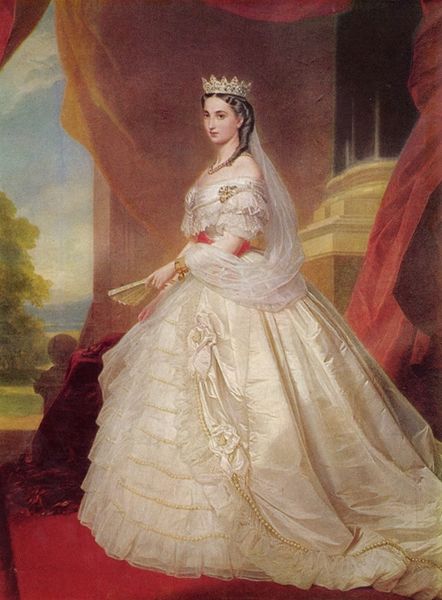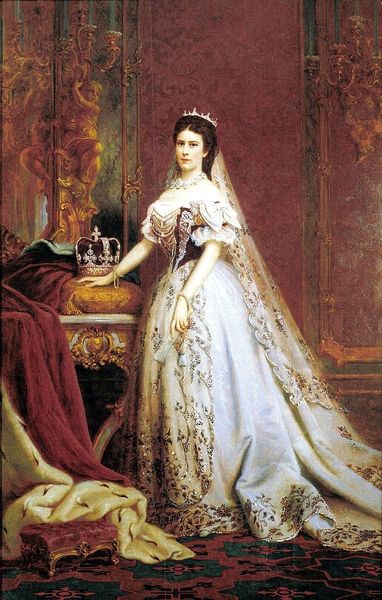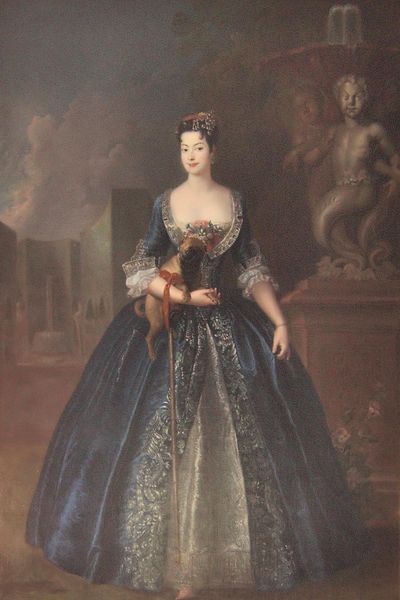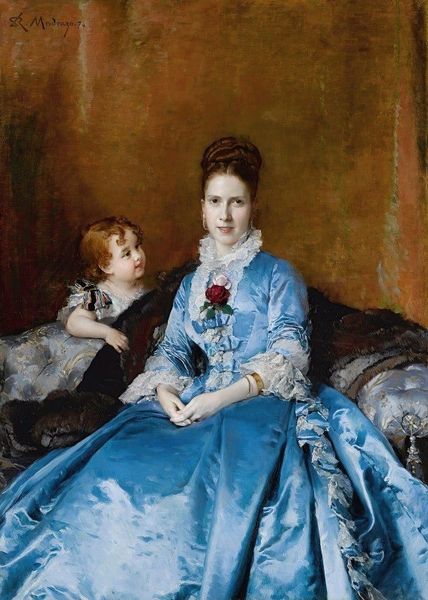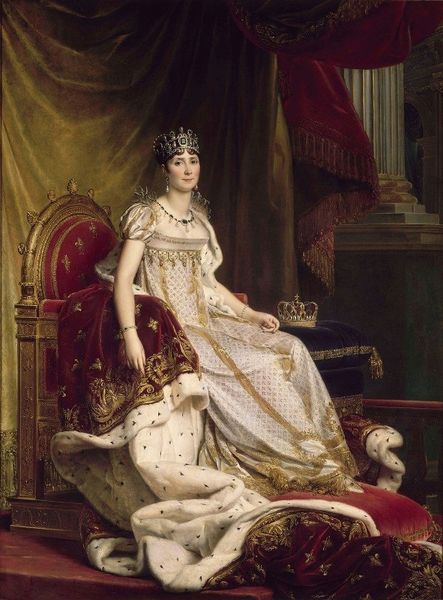
Copyright: Public domain
Editor: This is Franz Xaver Winterhalter’s 1852 "Portrait of Queen Isabella II of Spain and her daughter Isabella," rendered in oil paint. What strikes me is the sheer opulence and material presence. What do you make of it? Curator: This painting functions as a record of power expressed through material excess. Consider the vast quantity of fabric in Isabella's gown, likely silk and lace, imported at great cost, reflecting not only royal wealth, but Spain’s global trade networks at the time. Each rose and strand of lace tells a story of labor, often exploited. What do you see in the composition? Editor: The mother and daughter are clearly the focal point, highlighted against a darker background, though the draping and architectural features add a grand sense of scale. It is hard not to be distracted by all of the finery. Curator: Exactly. It speaks to the spectacle constructed around monarchy. But how is that finery *made*? Consider the labor-intensive processes: the silkworms farmed, the lace painstakingly woven by hand, the dresses assembled. What’s communicated isn’t just "wealth" but a system of production. Even the pigments – where did they come from? Editor: I hadn’t really considered the physical work behind it all; I was just seeing the surface. So you’re suggesting this portrait is less about Isabella herself and more about the massive economic and labor structures supporting her reign? Curator: In a way, yes. It uses her figure as a focal point, almost a justification, for this entire system of material creation. Royal portraiture like this naturalizes economic realities by making them beautiful, desirable. It’s less about the individual, more about solidifying material power through visual culture. Editor: I've definitely gained a new perspective. It's fascinating to think about the portrait as less about the subjects themselves and more about the complex web of production behind the image. Curator: Exactly. Thinking about materials forces us to reckon with how power operates materially. That can be revolutionary.
Comments
No comments
Be the first to comment and join the conversation on the ultimate creative platform.
